SEO vs SEM – Differences and Strategies for B2B Lead Generation
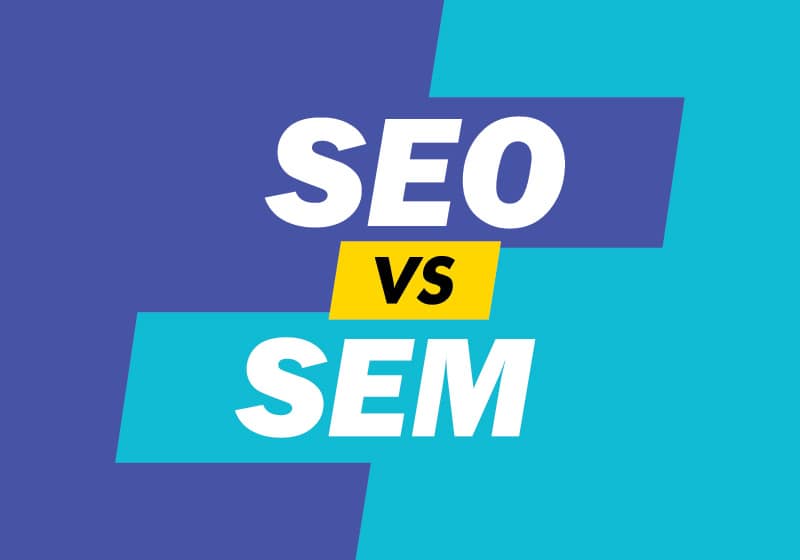
Most B2B organizations have heard of search engine optimization (SEO) and search engine marketing (SEM) and many of them embrace those strategies to generate leads and site traffic. Sometimes they’re successful, sometimes they’re not.
The trick to success when using these complementary strategies is to remember just that: they’re complementary. We won’t lie: there are use cases where one may be more successful than the other in reaching your goals. In general, though, you’re most likely to find success when understanding, using, and investing in both.
Once you have that figured out, you’ll be able to effectively use both to generate qualified leads to your website. We’ll walk you through how throughout this post.
One important thing to note: there are many alternate acronyms and jargon used to refer to SEO and SEM strategies which will be detailed further below. It can be confusing to someone newer to these strategies, but don’t worry: we’ll clarify as we go.
SEO Overview
SEO is an organic search marketing strategy.
SEO, also known as search engine optimization, refers to all activities your marketing team can utilize to rank higher organically on a search engine results page (or SERP).
The SEO umbrella includes a variety of strategies, including but not limited to keyword research, technical SEO, content marketing, on-page optimization, and off-page optimization.
The goal of SEO is to increase the number of qualified visitors and qualified leads (or conversions) to your website by improving your site’s ranking (or position) on a search engine results page.
It’s important to remember that simply attracting more visitors and leads to your website doesn’t necessarily mean you’re attracting the right ones. Read what makes industrial and B2B SEO different from more consumer brand-driven SEO here.
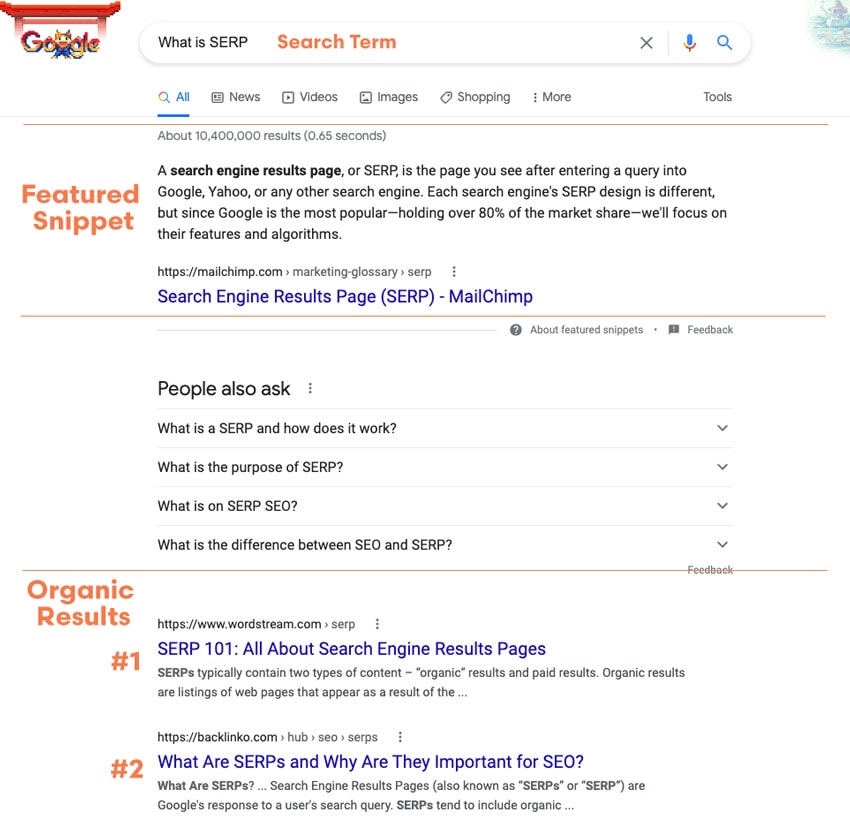
How SEO Works
At its core, SEO is most successful when you continually perform activities that increase the relevance and quality of your site content and functionality. The goal is to match the queries (or searches) that your best customer will search in Google or other search engine result pages.
SEO isn’t snake oil; if you can always keep relevance and quality of your site content in mind with any change to your website, you’re optimizing your site. Whether you intended to or not.
Another way to approach SEO is to put yourself in your best customers’ shoes. They have a problem that they seek a solution for on Google. They’ll type something relevant to their problem. Google will show them thousands (or millions!) of results that its algorithm thinks best answer the user’s search.
That’s where you enter the picture. You don’t need to show up for every query, but for the ones most relevant to your business. If the content and functionality deliver the best result and experience to the site user, they will stay on your site longer, interact with more pages, and if they’re in the market for your service, product or solution… they’ll engage. Voila – lead generation!
Reminder: most people focus solely on Google rankings, but as your marketing strategies mature, you’ll want to focus on other search engines, like on this list that HubSpot maintains.
You’ll also want to consider rankings on mobile vs desktop. For B2B businesses, we still continue to see heavier desktop use than more consumer-driven organizations. Either way, considering mobile is still a critical component of any website.
SEO Resources to Help You Get Started
- SEO Technical Audits
- On-Page vs Off-Page Optimization
- Positioning and Keyword Research
- Conversion Rate Optimization (CRO)
- Content Marketing
- Image and File Optimization
- Local SEO
- Inbound vs Outbound Marketing
SEM Overview
SEM is a paid search marketing strategy.
SEM, also known as search engine marketing, refers to all activities that your marketing team and organization can do to gain leads and web traffic via paid advertising strategies.
SEM is alternatively named PPC, or “pay-per-click”, and is often referred to more simply as paid advertising.
For B2B organizations, this happens most visibly through search engines like Google and Bing, but also occurs through social media channels like LinkedIn and Facebook.
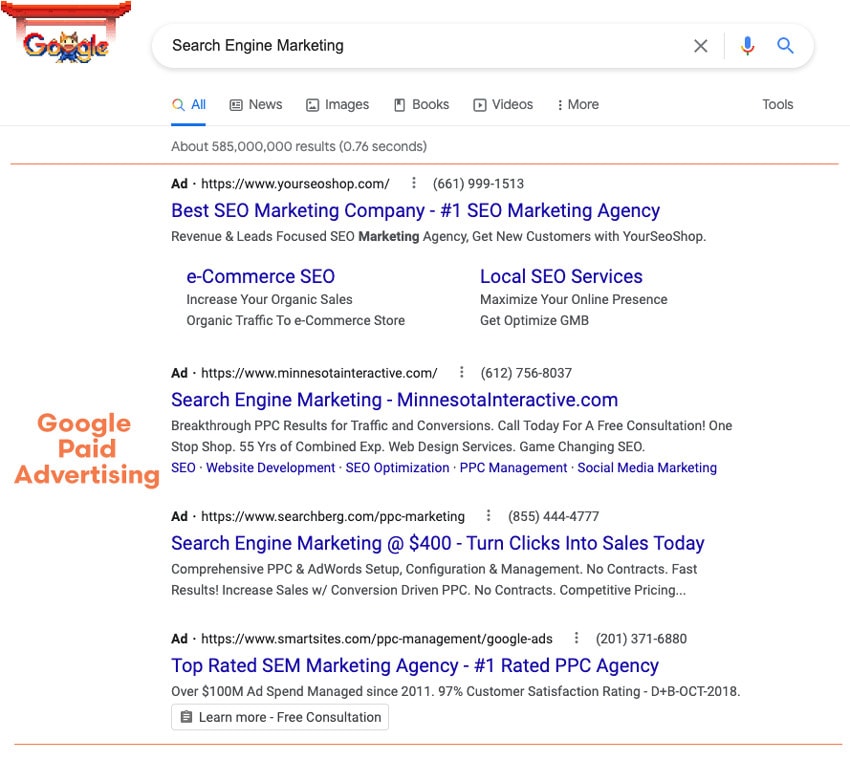
How SEM Works
SEM works by having your organization set up an advertising account with select platforms that allow you to target and advertise to specific search queries.
The fundamental approach to success is exactly the same as with SEO (above), in which you want to have the highest quality, relevant-to-searcher content.
However, with SEM you have more direct control over how often and in what position you might appear to prospects, whereas with SEO, organic search algorithms dictate how you rank among competitors.
SEM Advertising Platforms for B2B Marketing
For B2B marketing, the lion’s share of search engine-specific SEM happens via Google Ads via standard search ads, retargeting ads and display network ads. This is by far the most popular platform for hosting search engine ads. There are others, like Bing Ads, Baidu (if you’re targeting within China), and so on.
For social media-specific advertising, LinkedIn and Facebook will be the primary platforms that B2B organizations should consider, though occasionally there is a use case for Twitter, Instagram, and Amazon-sponsored ads.
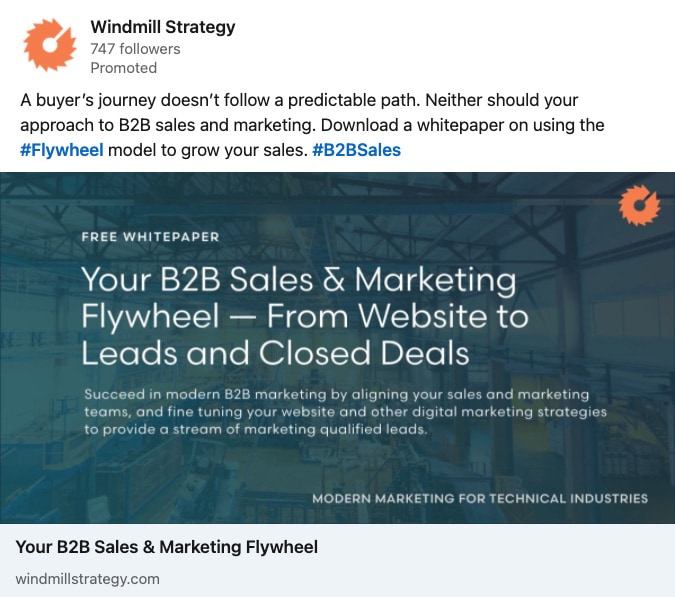
If you’re new to SEM for your organization, there are plenty of how-tos and help articles available from each respective platform, and some even offer free media credit to get you started. Be wary of their more “turn-key” setup and onboarding processes though, as those will typically cause you to spend your media budget quickly with few results to show for quality traffic or leads. After all, these advertising platforms make money when you spend it to advertise, so while they are vested in your success, you still need to know what you’re doing to get the best results.
Start By Defining Your Targeting Strategy and Campaign Structure
With SEM, you’re able to control which keywords you show up for, how often and when you show up, how much money (or media spend) you’re willing to spend with each advertising platform, and how a prospect can engage with your ad once viewed.
With great control comes great responsibility, so you’ll want to be extra careful when performing SEM activities to ensure you’re attracting the right audience to ensure ROI.
No matter what platform you’re advertising on, you’ll want to be taking these steps to ensure your success:
- Define your ideal customer profile(s), or the firmographics and attributes that make up your best customer. This is the basis that you’ll use to generate the other targeting parameters for your SEM campaign(s).
- Conduct keyword research into what your ideal customer profile(s) would be searching for. Consider which areas of the business you seek to grow and which are underperforming when prioritizing what type of advertising you want to do. For example, if one side of the business is overwhelmed with high-quality leads, don’t advertise for that business line, and focus your efforts on filling up the pipeline for an underperforming business line. A few extra tips include:
- Group your keywords into ad groups so you can better control future targeting as business needs shift.
- You’ll also need to understand different types of keyword targeting like broad match, phrase match, negative keywords, etc. Google maintains a great overview article of the core types of keyword matching options which more or less apply to all advertising platforms.
- Companies that serve niche audiences will want to define specific terms that only their B2B audiences would search for rather than more general terms searched by the general public. If you go too high level with the keywords for a niche audience, you can run through your ad spend without ever being viewed by the audience you’re seeking to reach.
- Create relevant ads that align with the keyword strategies and content on the landing page you’re directing prospects to. Ads should be relevant to the query which should be relevant to the content and functionality on the page. This will ensure that you’re attracting the right audience to the right landing page and can decrease your cost-per-click while increasing your quality score.
- Set a budget that caps and limits how much money is spent in media spend on a given advertising platform. This is typically set with a daily limit on how much you’re willing to spend via your credit card (or in some cases an invoice) to appear in front of your audience.
- Monitor metrics and continually optimize your campaign(s) across platforms to stretch your media budget as far as possible, ensuring your impressions and click-through rates increase while your average cost-per-click decreases.
Comparing the Differences and Similarities of SEO vs SEM
Here’s an easy-to-reference visual comparison of the differences and similarities of SEO vs SEM.
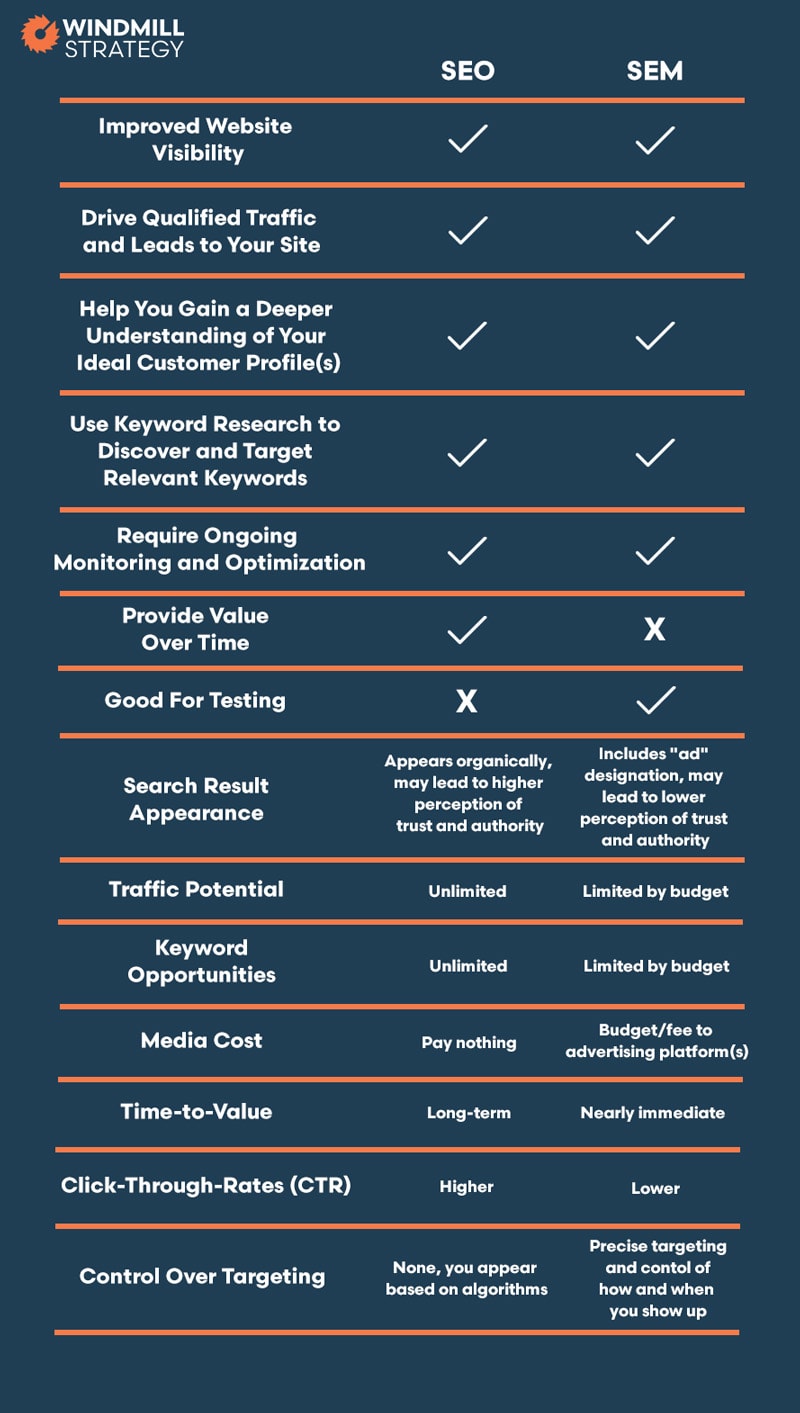
Windmill’s Advice on When and Where to Invest
Always Focus on SEO (Long-Term)
You’re never going to regret telling a better story, having a more solid value proposition, and creating better content. Investing in SEO strategies can never be a one-and-done approach, and should be an integral part of any marketing team’s plan for attracting qualified traffic and leads to their organization.
Selectively Focus on SEM, When Needed (Short-Term)
If you’re seeking quick wins and leads, SEM (when done right) can usually deliver. It takes experience and knowledge to run successful campaigns, though you can start small if you have limited experience and grow it as you prove success.
If you’ve seen great success from previous campaigns (measured in ROI for media spend and SEM management fees, if any), it’s safe to continue or increase your investment in these strategies. You should be considering how you can take this success and use SEO strategies to reduce your reliance on SEM strategies, though these things do often complement each other long-term.
A Closing Thought: Quality Over Quantity
Our primary focus at Windmill is to be targeted and intentional with every program we develop for every customer we have. We’ve been at this for a while and have learned firsthand that the most successful campaigns are informed by that need for balance and use both SEO and SEM to strategic success.


